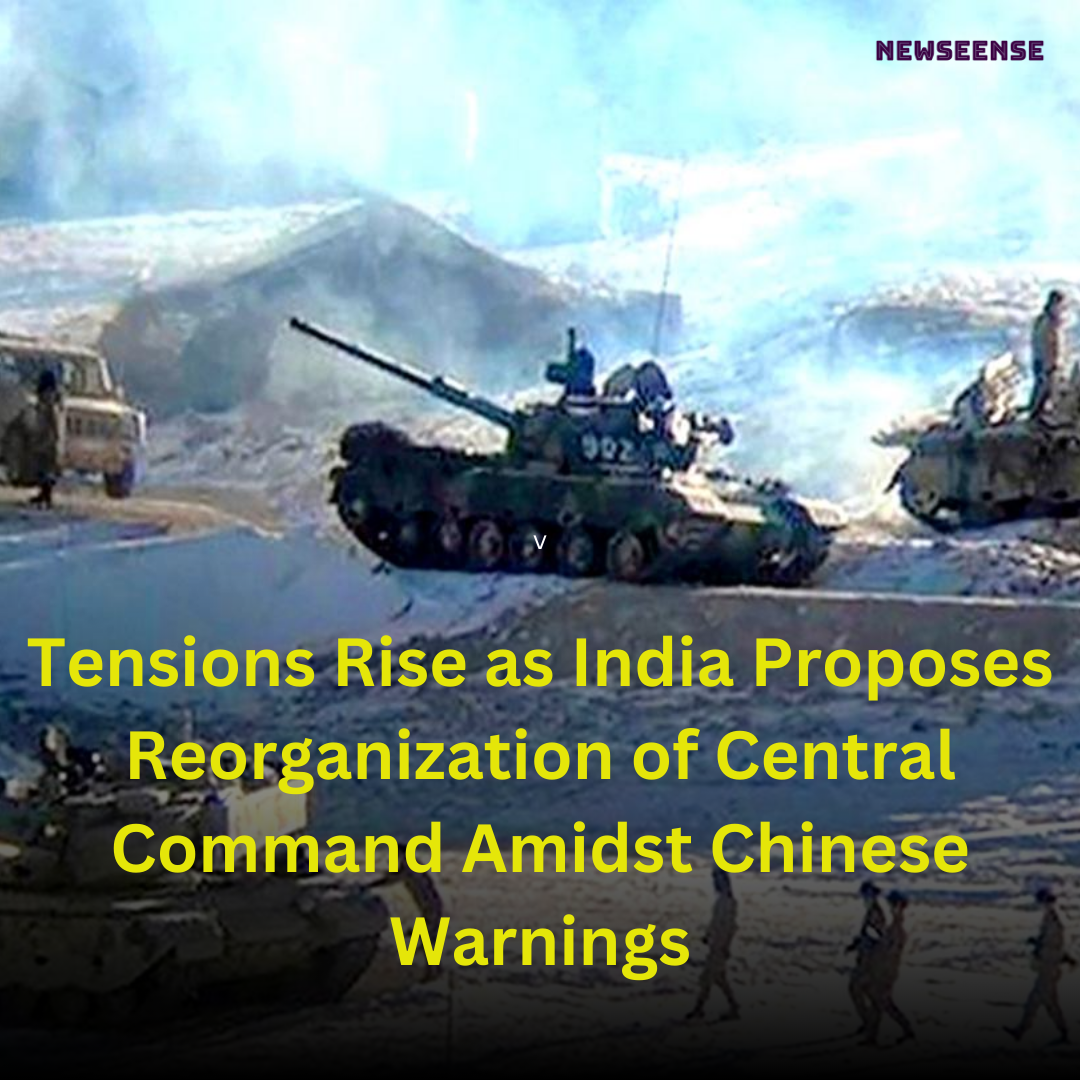Tensions Rise as India Proposes Reorganization of Central Command Amidst Chinese Warnings

In a recent development, the Indian Army has proposed a significant reorganization of its Central Command, aiming to enhance security along the Line of Actual Control (LAC) with Tibet in the Central Sector. This move comes in response to the People’s Liberation Army (PLA) deploying six combined armed brigades across Sikkim and Arunachal Pradesh in October 2022, raising concerns about Beijing’s double standards and aggressive posturing.

A Chinese spokesperson issued a sanctimonious statement on Friday, hinting at heightened border tensions should India proceed with the deployment of additional troops in the Central sector. Despite 21 rounds of military dialogues since the PLA transgressions in East Ladakh in May 2020, the first steps of disengagement remain incomplete in critical areas such as Depsang Plains and Charding Nullah Junction in the Demchok area.
India’s stance is clear – disengagement, relocation of PLA forces to barracks, and subsequent de-escalation are non-negotiable prerequisites for normalizing the border situation. Currently, the PLA has deployed around 50,000 troops and combined armed brigades along the 3488 km LAC, engaging in military upgrades from East Ladakh to Kibuthoo in Arunachal Pradesh.
Contrary to media reports suggesting India’s reinforcement of the Central Sector, the proposed plan is still at the early stages. In fact, the Indian Army is contemplating a reduction of one lakh personnel to optimize the teeth-to-tail ratio. The intent behind establishing the new Dehradun-based 18 Corps is to reorganize formations in the Uttar Bharat area without increasing forces, ensuring a more efficient response to any contingency in the Central Sector, given its proximity to the capital.
Despite the Chinese spokesperson warning against troop increases in the Central Sector, India remains committed to safeguarding its borders without unilaterally expanding disputes. China’s contestation of the Barahoti plains and Palam Sumda area, coupled with deliberate PLA troop movements, underscores Beijing’s assertive strategy.
India must remain vigilant in the face of potential PLA aggression, considering China’s unilateral military actions in East Ladakh in May 2020. The Chinese Communist Party’s objective then was to make unilateral cartographic changes on the LAC, imposing the already rejected 1959 line proposed by PM Chou En-Lai in East Ladakh.
The seemingly self-righteous statement from the Chinese spokesperson reflects a bullying attitude, echoing the Middle Kingdom’s historical approach to what it perceives as tributary states like Pakistan or the Maldives. China’s double-speak is evident, as the PLA remains fully deployed along the LAC with rocket regiments, artillery, and fighter aircraft in the hinterland.
While Beijing’s warning aims to pressure India into accepting the status quo, the Narendra Modi government deems this situation unacceptable. As tensions persist, the proposed reorganization of the Central Command stands as a strategic response to ensure India’s sovereignty and security in the region.
- BJP President JP Nadda Issues Notice to Dilip Ghosh Over Controversial Remarks on Mamata Banerjee
- Ram Charan and Kiara Advani’s ‘Jaragandi’ Song from Game Changer Released
- Pre-Match Banter: Rohit Sharma’s Flying Kiss Recreation Adds Spice to MI vs SRH Clash
- Swami Smaranananda Maharaj, President of Ramakrishna Math and Ramakrishna Mission, Passes Away at 95
- Stand-up Comedian Munawar Faruqui Breaks Silence on Social Media After Mumbai Police Detention





